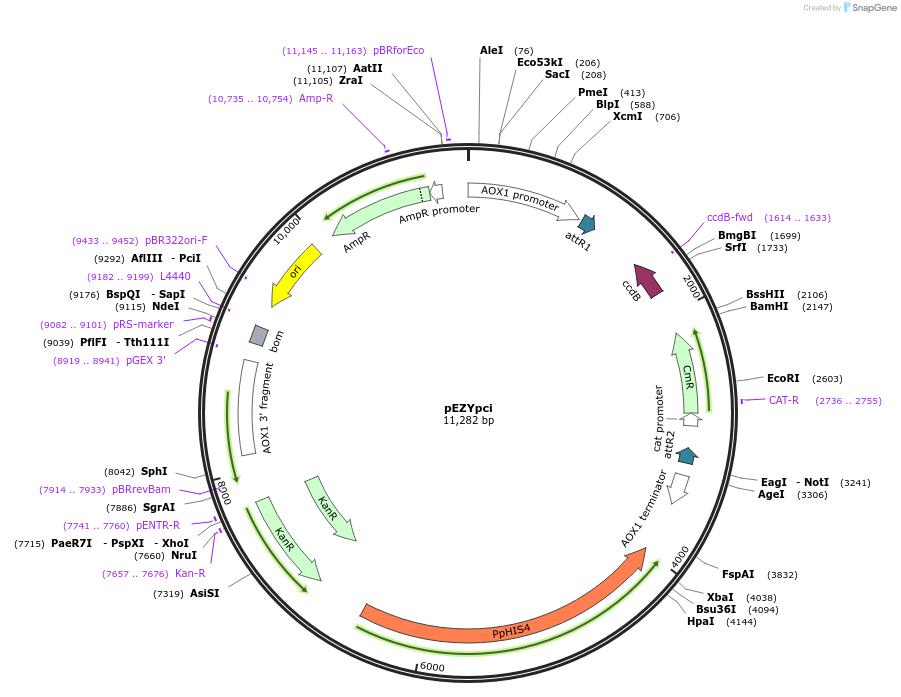pEZYpci
(Plasmid
#18707)
-
Purpose(Empty Backbone) pPIC3.5K converted Gateway Destionation vector for multiple copy integration of gene of interest into Pichia
-
Depositing Lab
-
Publication
-
Sequence Information
Ordering
| Item | Catalog # | Description | Quantity | Price (USD) | |
|---|---|---|---|---|---|
| Plasmid | 18707 | Standard format: Plasmid sent in bacteria as agar stab | 1 | $89 | |
Backbone
-
Vector backbonepPIC3.5K
-
Backbone manufacturerInvitrogen
- Backbone size (bp) 11282
-
Modifications to backboneGateway cassette was inserted into original vector to create the pEZYpci Gateway Destination vector
-
Vector typeYeast Expression
Growth in Bacteria
-
Bacterial Resistance(s)Chloramphenicol and Ampicillin, 25 & 100 μg/mL
-
Growth Temperature30°C
-
Growth Strain(s)DB3.1
-
Growth instructionsE.coli strain DB3.1 @ 30C
-
Copy numberUnknown
Gene/Insert
-
Gene/Insert nameNone
Cloning Information
- Cloning method Restriction Enzyme
- 5′ cloning site BamHI (destroyed during cloning)
- 3′ cloning site NotI (not destroyed)
- 5′ sequencing primer n/a
- (Common Sequencing Primers)
Resource Information
-
Article Citing this Plasmid
Terms and Licenses
-
Academic/Nonprofit Terms
-
Industry Terms
- Not Available to Industry
Trademarks:
- Zeocin® is an InvivoGen trademark.
Depositor Comments
pPIC3.5K Gateway-compatible Destination vector. Combine with an Entry clone containing your gene of interest with the Gateway LR reaction for integration of gene of interest into Pichia.
These plasmids were created by your colleagues. Please acknowledge the Principal Investigator, cite the article in which the plasmids were described, and include Addgene in the Materials and Methods of your future publications.
-
For your Materials & Methods section:
pEZYpci was a gift from Yu-Zhu Zhang (Addgene plasmid # 18707 ; http://n2t.net/addgene:18707 ; RRID:Addgene_18707) -
For your References section:
An in vitro recombination method to convert restriction- and ligation-independent expression vectors. Guo F, Chiang MY, Wang Y, Zhang YZ. Biotechnol J. 2008 Mar . 3(3):370-7. 10.1002/biot.200700170 PubMed 18064608







